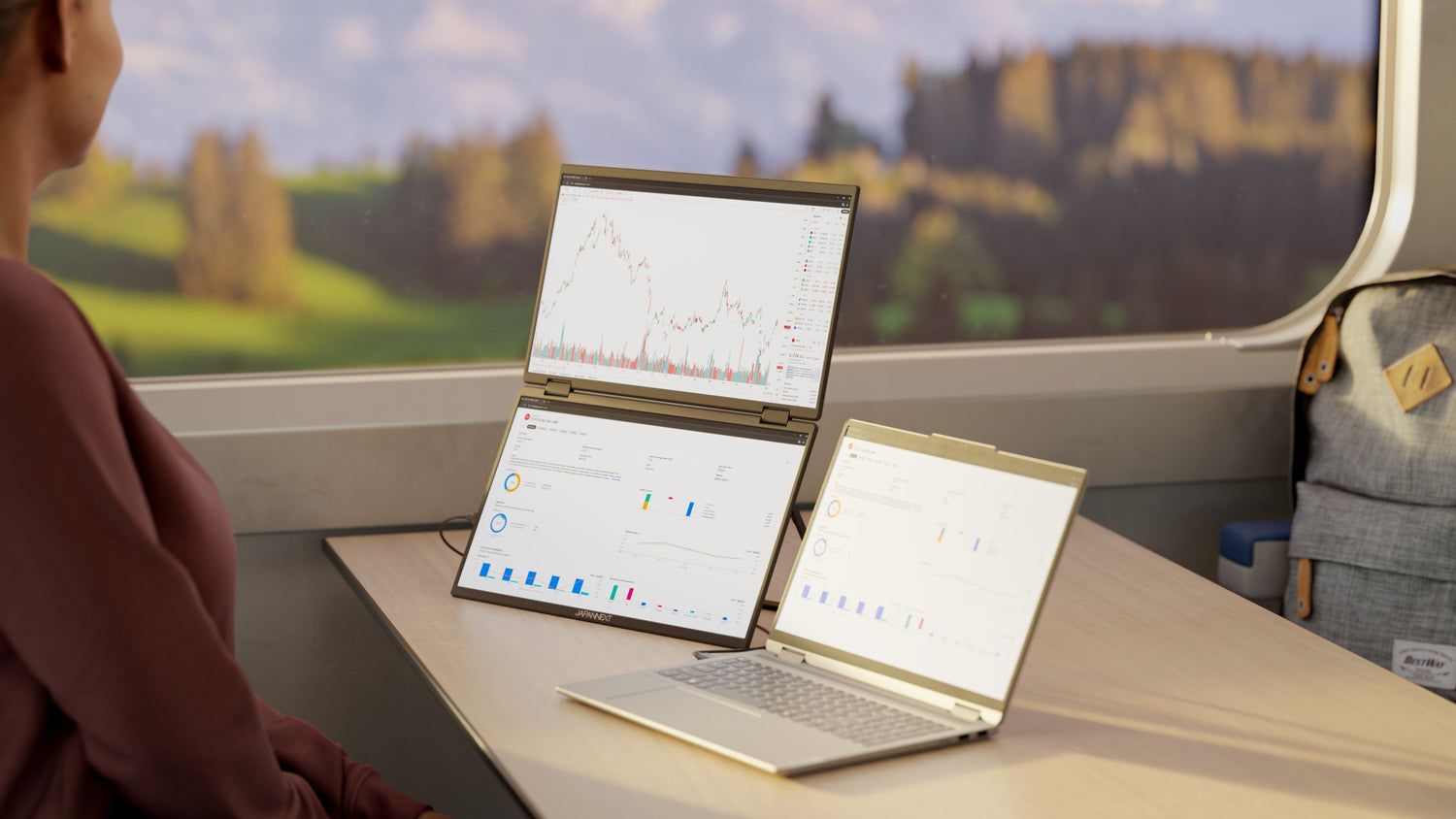In an increasingly digital world, a good monitor is essential if you want to get the most out of your digital activities. Whether you're a professional, a student or just a regular laptop user, your level of comfort and productivity largely depends on the quality of your screen. In this article, we'll take a look at the essential criteria that will help you make the best possible choice when it comes to a monitor.
Screen size: finding the right balance
The first criteria to take into account is, without doubt, the size of the screen. Depending on your needs and the space you have available, you should opt for a screen size that gives you maximum visual comfort. Mobile monitors are generally available in sizes ranging from 13" to 17". If you're looking for mobility and use your computer mainly for office work, a 13" to 14" monitor might be enough. On the other hand, if you work with graphics software, video editing, video games or simply enjoy watching films on your laptop, a larger screen (15 to 17 inches) might be preferable.
Resolution: a key element for a sharp screen image
Image quality is a key factor to consider when choosing a monitor. So it's essential to choose a resolution that suits your needs. Screen resolution is the number of pixels displayed across the width and height of the screen, e.g. 1920x1080 pixels for a Full HD (1080p) screen. The higher the resolution, the more detailed and precise the image will be, and the better your monitor will display high-quality content.
- For everyday tasks: HD resolution (1366x768 pixels) may be sufficient;
- For advanced office automation and multimedia: opt for Full HD (1920x1080 pixels);
- For professionals and creatives: choose a monitor with QHD (2560x1440 pixels) or UHD/4K (3840x2160 pixels) resolution.
Panel type: different technologies available
To optimise image quality, several panel technologies are available to meet user needs. The three main technologies used for laptop monitors are as follows:
- IPS (In-Plane Switching): this technology offers excellent image quality, with vivid, accurate colours and wide viewing angles (up to 178°). IPS screens are therefore recommended for graphics professionals and photographers.
- VA (Vertical Alignment): offering a good compromise between image quality and performance, VA panels are particularly appreciated for their high contrast and fast response time. They are ideal for gamers and movie streamers.
- TN (Twisted Nematic): although they perform less well in terms of colour rendition and viewing angles, TN panels make up for this with their responsiveness and moderate price. They are perfectly suited for users who prioritise budget over image quality.
Connectivity and compatibility: not something to be neglected
When choosing your portable monitor, you should also take into account the different types of connectivity available on your computer. It's essential to check that the connectivity ports on your PC match those on the monitor you want.
The main types of connector in use include :
- HDMI;
- DisplayPort
- VGA
- DVI;
- Thunderbolt (used on some MacBook models, for example).
Make sure you check the connectors on the monitor and on your computer before making your choice.
Responsiveness: an important criteria for some users
The response time of a screen is a factor that can influence the perceived quality of the visual display. It corresponds to the time it takes for pixels to change colour, generally expressed in milliseconds (ms). A low response time ensures better rendering of moving images and limits the effect of blurring or streaking in fast-moving scenes.
The level of responsiveness you require may vary depending on your usage:
- For professionals and video game enthusiasts: choose a screen with a response time of 1 to 5 ms;
- For everyday tasks and office work: a response time of 10 ms or more may be enough.
So make sure you choose a monitor with a response time that suits your specific needs, to get the best possible experience.
Design and ergonomics: a significant point
Although less technical, design and ergonomic criteria can also influence your choice of mobile monitor. Take into account the dimensions and weight of the device, as well as its general appearance and the quality of the materials used. Adjustable screen supports (height, tilt, swivel) are also an asset to ensure better working posture and avoid back and neck problems.
Our suggestion of portable monitor :
JN-MD-i156FHDR-T: This 15.6-inch FULL HD portable model offers impressive picture quality and true portability, making it the ideal choice for those who need a high-quality second screen on the move.
The final word:
To sum up, there are several key criteria when it comes to choosing a mobile monitor: size, resolution, panel type, connectivity, responsiveness, design and ergonomics. So take the time to compare and try out different models to find the one that best suits your needs and budget.



